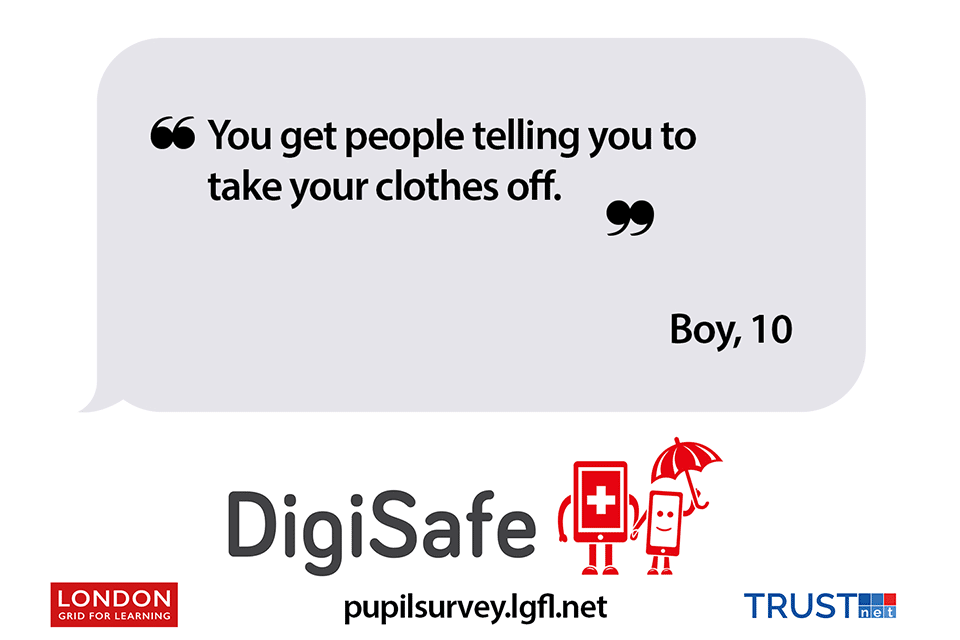…and boy, did we learn a lot. For the full report, video overview, or to read about a specific theme, head to pupilsurvey.lgfl.net. Meanwhile here on SafeBlog, we are starting a series of posts on themes from the survey.

Mental health / self-harm and livestreaming were major themes, and there was plenty to learn about violent and sexual content and sharing, online pornography, friendships, bullying, and who children want to talk to for advice). Just to be clear, there were many positives – it’s not all doom and gloom.
But in this first post, we thought it would be useful to skip to the end and reproduce our recommendation for schools’ next steps. Hopefully they will inspire you to want to go back and read the report to find out more and why we say. This is a list from the conclusion section of the report:
- You told us parents are key, and the survey confirmed this, so drive parental engagement with a focus on this key statistic: 73% of pupils trust their parents on online safety (but only half talk about it with them more than once a year). Make this the basis for all work with parents in this area – it is worthwhile
- Use the resources and lesson ideas linked to each thematic section of the report – there are plenty of direct links, or use the filters at saferesources.lgfl.net to shape teaching & learning and support staff and parents
- Use the quotes and statistics dotted throughout this report as discussion starters in class and in staff inset –taking just one quote and statistic from a specific section will give you plenty of potential for a valuable discussion
- Remember the distress caused by violent videos, especially towards animals, which is an area that adults often do not identify
- Investigate the role of peer programmes for pupils to support each other – ‘telling a friend’ was the second favourite option for talking about the worst things that happen online
- Consider predator behaviour (and talk to parents about why it matters for the youngest children) regarding coercing children to change clothes on camera – remember our statistics show how this affects the very youngest children
- Focus on behaviours rather than lists of ‘bad apps’ – predators hop around apps, so scare stories just lead to a false sense of security
- Discuss latest screen time concerns with parents and share sensible advice on balancing activities rather than limiting time
- Address technology addiction by asking pupils what they think about the nearly 1 in 3 who admitted finding it hard to stop using devices to have a break
- Refresh teacher, parent and pupil awareness of helplines for advice and support
- Incorporate real-life examples from normal adult life into online safety education – admit that we can get it wrong too
- Make sure the youngest pupils know they should talk to a trusted adult about anything that gives them ‘a funny feeling inside’
- Provide staff refreshers on key documents such as Keeping Children Safe in Education and the UKCCIS Sexting Guidance
- View and share materials on understanding the motives for self-harm in the mental health section, considering how to talk about the issues without ‘giving ideas’
There were recommendations for government and industry too, and of course for us – what do we plan do do as a result of this survey. Head to pupilsurvey.lgfl.net and read the report to find out more. Next blog – mental health and self-harm bullying.